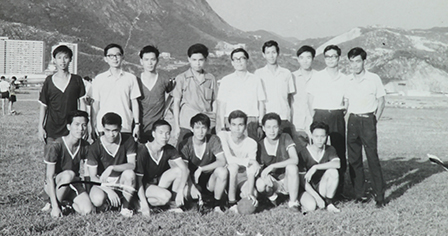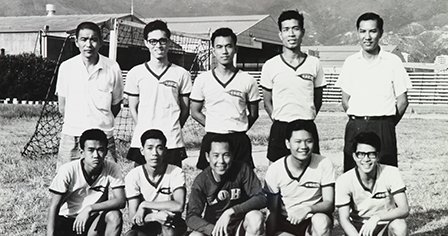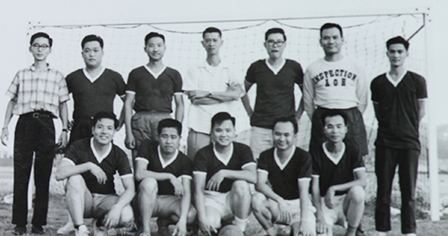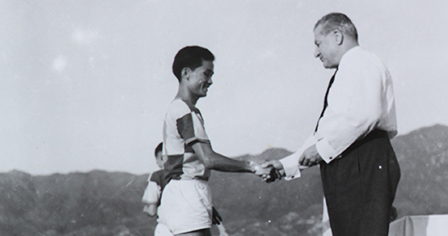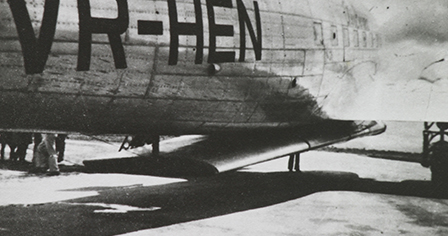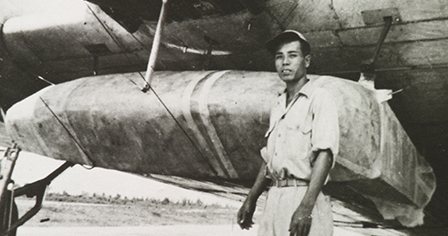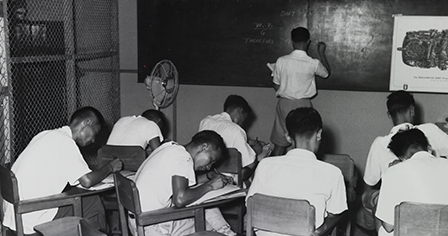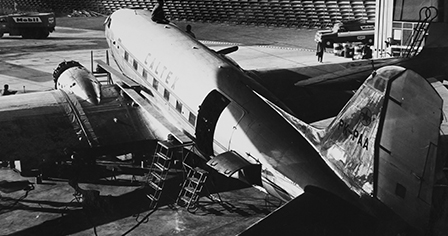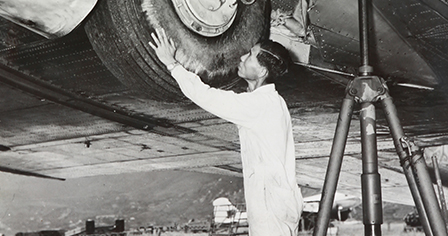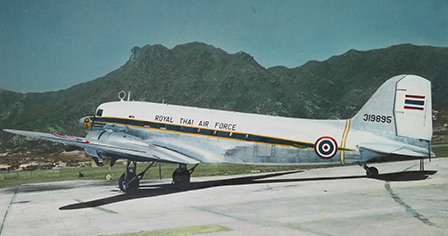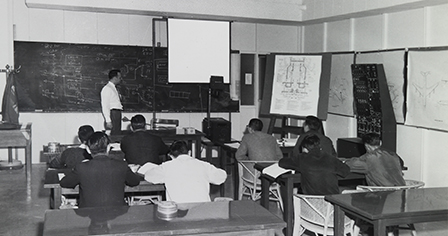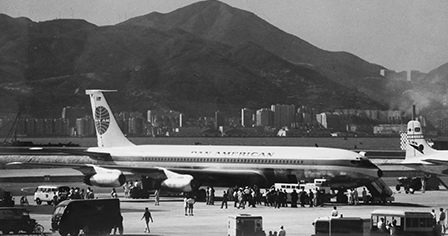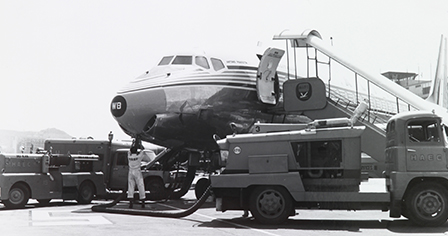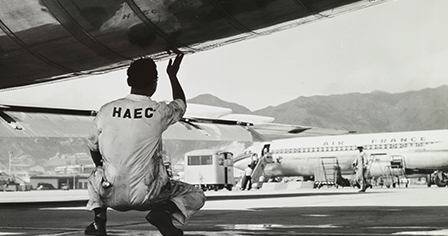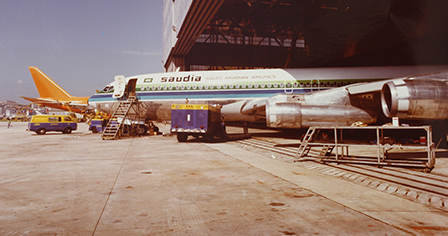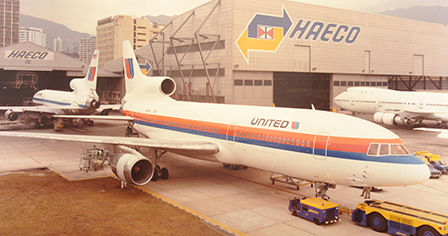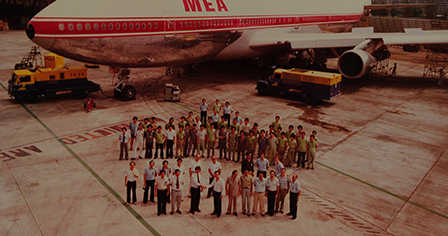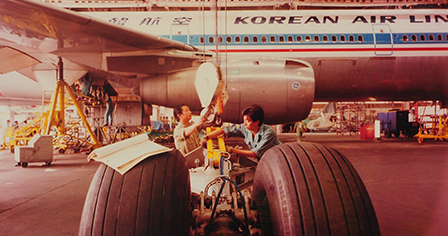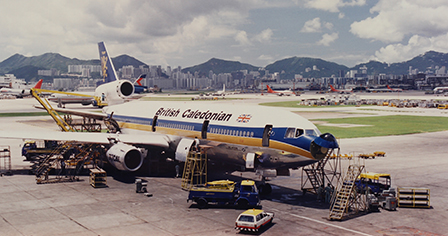
 Stories
Stories
-
14
Why I joined HAECO
-
15
The apprentices
-
16
MET flyer
-
17
CV240
-
18
Mistakes & even more mistakes
-
19
Up in the air
-
20
When boss calls
-
21
Craftsmanship rules
-
22
Package matters
-
23
Seaplanes maintenance
-
24
Reconfiguration
-
25
Fixing the gas tank
-
26
Tempting staff benefits
-
27
New business
-
28
747 inauguration
-
29
New is not enough
-
30
We rock the world
-
31
Lufthansa incident
14


Albert
May I venture to ask why you joined HAECO?

Yiu Yu Tim
Well! My reason of joining should be the most interesting one…
Football fan applies for job at HAECO
After I finished school, a relative of mine suggested that I should apply for the HAECO recruitment exam. I was interested because I saw two football pitches in HAECO. What I mean is, I applied for the exam because I like playing football. I saw two interviewers: the first was a foreigner and we chatted a bit, the second was an engineer, who questioned me about some basic knowledge and asked me to do some electrical drawings. They gave me the offer a month later. One of the football pitches was on the roadside, verging on the nullah near the catering department and police station. Another pitch was half an apron and half a closed area. The apron part was turned into a police station later. Anyway the two parts happened to make a pitch, and even the police played football there. It was a Pan Am pitch, close to the apron. We went for the game once we got off, and we played from 5:00 to 7:00.
Different kinds of football games were organized for the staffs of HAECO and other airport companies and units.
Foreign executive presented awards after a football match between HAECO employees on the football pitch outside the hangar.

Law Tak Shing
I remember the football pitch as well…
A football court in the airport
There was not yet a place called San Po Kong at that time. The HAECO workers played football at a lawn, which later became Paris Theatre. The car park that appeared later was the HAECO hangar.
In the middle of the photo are the former HAECO hangar and the surrounding lawn and apron. They were demolished in the 50s when Kai Tak underwent reconstruction. Later they became Prince Edward Road East and the San Po Kong industrial area.
The lawn outside the hangar was the apron of the old Runway 07/25. The HAECO employees used it as a football pitch.

Huen Shing
I was repairing aircrafts in the mainland as early as 1949…
Member of the Chinese air force applies for job at HAECO
I was born in Samshui in 1927, and I worked for the Nationalist Air Force at No.1 Aircraft Manufacturing Plant in Kunming. I had three brothers. My second elder brother was a worker of the Air Force Manufacturing Plant, and with his introduction we became the apprentice of the Kunming Air Force. I joined the force at 16 or 17, underage as a matter of fact. In 1949, I was working at Tianhe Airport in Guangzhou — the Nationalist Party had not yet retreated at that time. For several months at the end of 1948 I lived in Tianhe Airport, then I visited Hong Kong with a colleague, who went for an interview at Cathay Pacific. A week later I did the same and was hired by Jardines. It was difficult to live in Hong Kong in those days. It was difficult to find a job, but I had the red book, that is, the Air Force certificate. PAMAS and Jardines were inclined to hire skilled workers from China National Aviation Corporation, Central Air Transport Corporation and the Air Force because they didn’t have to spend anything to train us.

Cheng Tin Gai
There were only 200 or 300 staffs when I joined HAECO in early 1954…
Career choices for the graduates of Far East Flying Schools in its early years
I came from Macau. During the Japanese occupation I was studying in a secondary school in Guilin, and when the war was over I went back to Macau. After I finished school I moved to Hong Kong. At first I wanted to receive flight training in the Far East Flying Training School. But then people told me I could never make a living out of flying; it could only be an interest, because no one would hire a Chinese pilot. Hong Kong was so dominated by foreigners, you know. So I thought I’d better study engineering. In 1947 I joined the Far East Flying Training School and studied mechanical engineering for two years. After I graduated I joined Jardines. At that time Cathay Pacific rented out two C-47s to Myanmar Airways, and they had to send 10 engineers to station at Myanmar because the country didn’t have any engineers of the kind. I was a qualified engineer by then. Once I joined Cathay Pacific I was sent to Yangon, and I stayed there for over a year. In 1951 or 1952 I went back to Hong Kong as the contract finished. I was intended to join HAECO, but the business environment was quite bad at that time. So I became a sailor instead. It was in 1954 that I joined HAECO.
Before Myanmar fell under the rule of military dictatorship, it had a very close relationship with the Hong Kong aviation industry. Flights coming from Myanmar were frequent visitors of Kai Tak and HAECO.
On DC-3, large cargo could be fastened onto the fore portion of the fuselage. In the photo, a DC-3 of Cathay Pacific was delivering a wing compartment.
A Cathay Pacific DC-3 was about to take off from Kai Tak to deliver a wing compartment out of Hong Kong. The compartment was to serve as the replacement wing of another aircraft.

Lee Ping
At first I worked in the Department of Army. In 1957 a colleague introduced me to HAECO (機港) because they gave overtime pay, so I could earn more. My salary at HAECO was $9.5 excluding overtime pay rate. They paid us in cash, and each of us received an envelop on the payday. We had not much training at that time. Once we got in, we worked.

Lau Tat Chiu
I became a HAECO apprentice in 1965. That was the time when HAECO started to recruit apprentice every year. In my class there were 70 students, and the recruitment exam tested three aspects: Chinese composition, mathematics and general knowledge. For example the exam asked who invented airplane. It was difficult to find a job in those days. My first job was to sell stamps in the post office, and I had about $300 per month. Then I saw the newspaper advertisement of the HAECO recruitment, and it offered about $200 per month. I applied for the exam, thinking that the chance of a pay rise was rare in the post office, and I had salary even as an apprentice in HAECO. In the 70s I was promoted to the engineer rank. With a monthly salary of $2700, I earned as much as a teacher and a police inspector.

Lai Kam
I joined the Carpentry Department of HAECO in 1959. Before that I worked as a carpenter because the demand for interior decoration was high shortly after the war. Then I was informed about the airport recruitment, and I went for the exam. During the interview, the interviewer gave a task to test your ability — it was about carpentry and painting, and you had to pass the exam before they considered hiring you. There were a lot of applicants, but they hired only two in the end. Our salary was low at the start, but as we kept working hard the pay increased through time.

Lee Ming Chien
I was from the Jardines hangar…
Member of the Chinese air force applies for job at HAECO
That’s how I got into Jardines: during the exam interview they asked me some knowledge about planes, and I got them 100% right. That’s how I got to be a technician of Jardines. Before that I worked in the Chinese Air Force’s aircraft manufacturing plant — the Kunming No.1 Aircraft Manufacturing Plant, that is. My job was to produce graph representation of aircraft in the design room. Since DC-3, that is, the Air Force’s C-47, was the model I most often drew when I first entered the plant, I knew all about it by the time I went for Jardines’ exam interview! I came to Hong Kong in 1948, and I went for the exam because Jardines happened to need man of my sort. A friend told me about the recruitment when I was flying from Kunming to Hong Kong. That’s why I went for it.

Lau Yee Kow
In 1949, my sister-in-law introduced me to the air maintenance company. I was an apprentice with a daily wage of $2.8. Just eleven months later the two companies merged to form HAECO, but since the business wasn’t doing good, we apprentices were dismissed. I returned to HAECO in 1953. At first I did cleaning, then I was transferred to the Inspection Department.

Chan Bing Cheong
I joined HAECO in 1953, after I graduated from Hong Kong Technical College. I did repairing at the start. Then I got promoted: I was the supervisor in 1958, the senior supervisor in 1964, and I became an engineer in 1967. At the time I joined the organization, a shipyard offered a standard wage of $7.7 per day, and the HAECO Engine Rebuilding Department gave $11 to $12. The monthly salary of a supervisor was $500. It was $750 for a senior supervisor and $1000 or above for an engineer.

Liang Yee Ming
I graduated from the Far East Flying Training School in the 70s…
Career choices for the graduates of Far East Flying Schools in the 70s
I graduated from the Far East Flying Training School in 1970. There was no recruitment from HAECO at that time, so I worked at an automobile repair workshop. Later our teacher told us about the recruitment, and almost a hundred of us went for HAECO. It was difficult for a secondary school graduate to find a proper job, and people hired us as apprentice. In the automotive garage I had not only salary but also tips; however, HAECO offered just $20.6 a day. At the beginning I didn’t have chance to work overtime, so I earned just a little above $500 a month.
The 2nd Apprentice Graduation Ceremony of HAECO. The three graduates stand in the middle of the photo, certificates in hand. The rest are the instructors and other apprentices.

Cheung Kwok Kuen
I joined HAECO in 1970…
Graduates of technical school in the 70s applies for jobs at HAECO
I have a penchant for planes since childhood. I like making models of aircraft and collecting photos of them. And I am also passionate about aerospace. NASA developed rapidly in the 60s and 70s, and I was already deeply enchanted when at school. Whenever they undertook a project, I would go look for information on the United States Information Service. I had my secondary education in a technical school, and I studied electrical engineering in the college. It happened that the principal of HAECO contacted the school for recruitment by the time I graduated. They looked for instructors, and when I got in I was already a tutor. The classes I took up were about basic electronics and basic engineering. The principal sent me to America’s Boeing Company for advanced study, and after I’d learnt all about different types of plane I came back to teach. I started with the “Viscount”, then 880, 770, DC-10, L-1011, 747, etc.
Hangar No.4 faced inadequate capacity when it was first put to use. To alleviate the problem, HAECO made every effort to clear up sheltered space for aircraft maintenance. Sometimes planes had to park at an angle to receive service — like the Saudia 707 in photo.
Pan Am’s “TriStar” aircrafts received repainting in HAECO after United Airlines acquired its far east service and air fleet in the 80s.
Middle East Airlines (aka Air Liban S.A.L.) was one of the major clients of HAECO. In the photo, a MEA 747 had undergone overhaul at HAECO in the 80s.
DC-10 of Korean Air Lines received service in the HAECO hangar in the 80s. On the body of the aircraft was painted its name in Chinese character.






